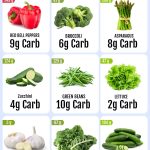The Best Diet for Diabetic Gastroparesis-Diabetic gastroparesis is a condition where delayed stomach emptying occurs due to nerve damage from diabetes. Managing this condition requires a specialized diet that helps regulate blood sugar levels and promotes easier digestion. In this comprehensive blog post, we explore the best dietary practices, meal planning tips, and foods to include or avoid for individuals with diabetic gastroparesis. We’ll also provide external links for further reading and FAQs to address common queries related to diet management.
Table of Contents
ToggleUnderstanding Diabetic Gastroparesis
Diabetic gastroparesis is a complication of diabetes that affects the stomach muscles and nerves responsible for moving food through the digestive tract. Common symptoms include nausea, vomiting, bloating, and erratic blood sugar levels. Since delayed stomach emptying can make it challenging to manage blood glucose levels, dietary modifications are crucial to alleviate symptoms and maintain overall health.
Best Diet Practices for Diabetic Gastroparesis
1. Low-Fiber Foods
- Purpose: Easier digestion and reduced risk of blockages.
- Examples: Refined grains (white bread, pasta), well-cooked fruits and vegetables without skins or seeds.
2. Small, Frequent Meals
- Purpose: Helps manage symptoms by reducing the volume of food in the stomach at one time.
- Examples: Five to six small meals or snacks throughout the day rather than three large meals.
3. Liquid and Pureed Foods
- Purpose: Facilitates easier digestion and faster stomach emptying.
- Examples: Smoothies, soups, pureed vegetables, protein shakes.
4. Balanced Macronutrients
- Purpose: Maintains stable blood sugar levels.
- Examples: Include lean proteins (chicken, fish), healthy fats (avocado, olive oil), and complex carbohydrates (whole grains in moderation).
5. Monitor Sugar and Fat Intake
- Purpose: Prevents blood sugar spikes and promotes overall health.
- Examples: Limit added sugars, sugary beverages, and high-fat foods.
Foods to Include and Avoid
Foods to Include:
- Lean Proteins: Chicken, turkey, fish.
- Low-Fiber Fruits: Bananas, melons, canned fruits.
- Cooked Vegetables: Potatoes, carrots, green beans.
- Healthy Fats: Avocado, nuts, seeds.
- Low-Lactose Dairy: Lactose-free milk, yogurt.
Foods to Avoid:
- High-Fiber Foods: Whole grains, raw vegetables, nuts, seeds.
- High-Fat Foods: Fried foods, creamy sauces, fatty cuts of meat.
- High-Fiber Fruits: Berries, citrus fruits with membranes.
- Carbonated Drinks: Soda, sparkling water.
- Alcohol and Caffeine: Can exacerbate symptoms.
Meal Planning Tips
- Eat Smaller Portions: Opt for smaller meals/snacks spread throughout the day.
- Stay Hydrated: Sip water between meals to aid digestion.
- Chew Thoroughly: Helps break down food for easier digestion.
- Keep a Food Diary: Track symptoms and identify trigger foods.
External Links for Further Reading
- Mayo Clinic – Diabetic Gastroparesis
- National Institute of Diabetes and Digestive and Kidney Diseases – Gastroparesis
FAQs About Diet for Diabetic Gastroparesis
1. Can dietary changes improve diabetic gastroparesis symptoms?
Yes, a tailored diet can help manage symptoms by regulating food intake and promoting easier digestion.
2. What are some easy-to-digest foods recommended for gastroparesis?
Smoothies, soups, well-cooked vegetables, and lean proteins are generally easier for digestion.
3. How does diabetic gastroparesis affect blood sugar control?
Delayed stomach emptying can lead to unpredictable rises or drops in blood sugar levels, necessitating careful meal planning.
4. Are there medications or supplements that can help with gastroparesis symptoms?
Doctors may prescribe medications to aid digestion or suggest supplements like digestive enzymes.
5. Should I consult a dietitian for personalized dietary advice?
Yes, a registered dietitian can help create a personalized meal plan based on individual needs and preferences.
Conclusion
Managing diabetic gastroparesis through diet plays a crucial role in symptom control and overall health. By incorporating low-fiber, easily digestible foods and adopting meal planning strategies, individuals can effectively manage their condition and improve their quality of life. For more in-depth information, explore the provided external links and consult our FAQs to address common concerns about dietary management of diabetic gastroparesis.











